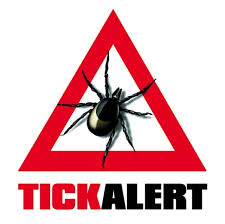Now that spring is upon most of the country, it’s a good time to refresh yourself about understanding tick-borne disease, learning how to protect yourself, and recognizing signs and symptoms of infections in yourself and in your patients.
Lyme disease gets most of the tick-borne disease headlines, but there are plenty of other illnesses caused by ticks that cause just as much misery and potentially life-changing harm.
Ticks tend to live in wooded areas and fields with tall grasses. The feed on blood, so small rodents like mice or larger animals like deer, moose, or human beings make perfect hosts for these bugs. Household pets that go outside are also known to bring ticks into your home where they can drop off on floors and furniture and attach to people. They will attach to their host and can remain attached for days, transmitting diseases along the way. According to the Centers for Disease Control and Prevention, some of the more well known tick-borne diseases include Lyme, bartonella, babesiosis, anaplasmosis, tularemia, and Rocky Mountain spotted fever.
Most people can see the larger ticks, but they can get into areas that you won’t notice immediately – like your back, your feet, under your arms, or your scalp. But the ticks in the larval stage are nearly microscopic and are almost invisible unless you are searching for them. Even then, they are tough to see. And many ticks transmit a chemical that acts like an anesthetic, so your skin might not be irritated when they are biting you.
The first step in tick-borne illness is preventing yourself from ever getting it. That means treating your indoor/outdoor pets with tick medication that will both repel ticks from your animals and kill any that attach.
When you are outside, cover up with long pants tucked into socks and long sleeves if you are taking a hike or gardening. Use bug spray containing DEET to keep ticks off your exposed skin, but make sure you wash it off when you come in. And when you do come in from outside, head straight to the shower. Take your clothes off (from underwear to socks to coats) and pout them in plastic bags if you can’t get them right into the washing machine. Wash your clothes and then put everything in the dryer to kill off any ticks that might still be attached.
If you do notice a tick, pull it off with tweezers by grabbing the tick at the head and pulling hard enough to remove the whole tick. You want to make sure the head is not still burrowed into the skin. If that happens, you might need to get it removed (yet another bonus when you are working with nurses!). Wash the area and your hands and then apply an antibiotic and a bandage. Watch for signs of infection around the bite (or a Lyme-alert of a bulls-eye rash). Also pay attention to how you feel—any joint pain, fevers, flu-like symptoms, headaches—could signal a tick-borne illness.
Generally, treatment will consist of several weeks of antibiotics, but some people suffer longer-term issues. According to the Lyme Disease Association, there’s debate in the medical community, as some health practitioners believe Lyme is exceptionally difficult to diagnose and eradicate. Other believe the lingering symptoms some patients feel are related more to an autoimmune issue.
Either way, a tick-borne illness is miserable to deal with and your best course of action is prevention. You don’t have to avoid the outdoors, but take precautions and check yourself, your family members, and your pets when you all come in from the outside.
- WOC Nurses Week Highlights Specialty - April 16, 2024
- Honoring Radiology Nurses Day on April 12 - April 12, 2024
- Travel Offers New Career Possibilities - April 8, 2024



